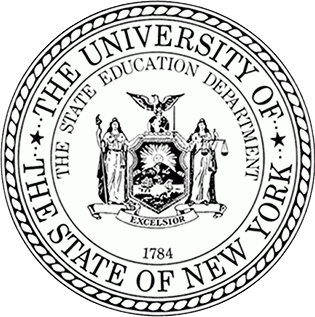FOR IMMEDIATE RELEASE

NYSED Releases Updated Guidance and Resources on Substantial Equivalency of Instruction
NYSED to Hold Trainings for Public and Nonpublic School Leaders
in December and Continuing Next Year
Guidance Result of Thoughtful Two-Year Process & Stakeholder Feedback
The New York State Education Department today released updated guidance and resources for local school authorities and religious and independent schools regarding the statutory requirement for substantial equivalency of instruction at nonpublic schools to ensure that all students receive the education to which they are entitled. In addition, the Department will begin to hold trainings for both public and nonpublic school leaders on the guidance in December and continuing next year.
“Every child has a fundamental right to receive a quality education,” Board of Regents Chancellor Betty A. Rosa said. “By providing these resources on the substantial equivalency of instruction in nonpublic schools, we are providing public and nonpublic school leaders with a roadmap to conduct these reviews. The process should be a collaborative effort that is a mutually beneficial learning process for leaders of both public and nonpublic schools resulting in appropriate educational opportunities for the children they serve.”
“Our guidance recognizes that parents have a right to choose a nonpublic school for their child,” State Education Department Commissioner MaryEllen Elia said. “We want to ensure that all students receive the education they are entitled to under state Education Law no matter which school they attend. Every review should be carried out in a respectful, mindful and objective manner to give all students the opportunities they deserve to succeed in life.”
Need for Updated Guidance & Stakeholder Engagement
Under state law, local public school officials have the responsibility to ensure that the education received by nonpublic school students is substantially equivalent to that received in district public schools. Substantial equivalency means that a program is comparable in content and educational experience, but it may differ in method of delivery and format.
For decades, the New York State Education Department has provided guidance for public school officials to determine the substantial equivalency of education provided in religious and independent schools. In response to questions from the field, the Department engaged in a consultative process for approximately two years to update the guidance.
The guidance reflects current law, including the April 2018 Legislative amendment to Education Law §3204, and provides guidance and resources to support public school officials and leaders of nonpublic schools in meeting their respective responsibilities related to substantial equivalency requirements. Under the amendment, the Commissioner of Education makes the final determination of whether certain religious and independent schools, as defined in Education Law § 3204 (2), are providing a substantially equivalent education. The Commissioner will do so after an initial review by local school officials or their designees.
NYSED engaged in a deliberative and thoughtful process to update the guidance, consulting with numerous stakeholders, in both the public school and religious and independent school communities and used feedback from those meetings to enhance the guidance document and resources.
The Department recognizes the need for the substantial equivalency review process to be conducted in a flexible and inclusive manner. The guidance establishes five core principles that are essential in the review process – objective, mindful, sensitive, respectful and consistent – to help establish a collaborative process between public and nonpublic schools.
Timeline for Implementation of Guidance
Beginning in December and continuing next year, NYSED will conduct trainings in cooperation with Boards of Cooperative Education Services for public and nonpublic school leaders who will be involved in the review and determination process. In addition, NYSED will post a webinar on its website next month. School districts will begin to conduct substantial equivalency reviews during the 2018-2019 school year and NYSED expects school districts to complete initial reviews for religious and independent schools within their district by December 15, 2021. School districts should revisit schools in their district on a five-year cycle.
If a religious or independent school initially does not appear to offer substantially equivalent instruction, the guidance provides that both public and nonpublic school leaders should work together to develop timelines and benchmarks to achieve substantial equivalency. In addition, nonpublic schools may use existing Title II, Title IV and state academic intervention services funding to provide professional learning opportunities for teachers.
Resources Available
The Department will provide training for both local school authorities and nonpublic school leaders across the state to ensure the new guidance is consistently applied from school to school. School districts may also engage their local BOCES to help fulfill their substantial equivalence review obligations.
The Department developed toolkits for both public and nonpublic school leaders to support and promote consistency in the determination process. The toolkits will help nonpublic school leaders to prepare for an upcoming review and guide local school authorities in a manner that meets the review’s core principles. The toolkits establish the expectations for both public and nonpublic school leaders and includes a rubric with criteria aligned with current law and regulation. The toolkits are available on the Department’s website.
The Department also plans to develop and maintain a list of frequently asked questions to help local school authorities and nonpublic school leaders understand and improve the review and determination process. The guidance and additional resources are available on NYSED’s website.
Media Contact
Reporters and education writers may contact the Office of Communications by email or phone at:
Press@nysed.gov
(518) 474-1201





